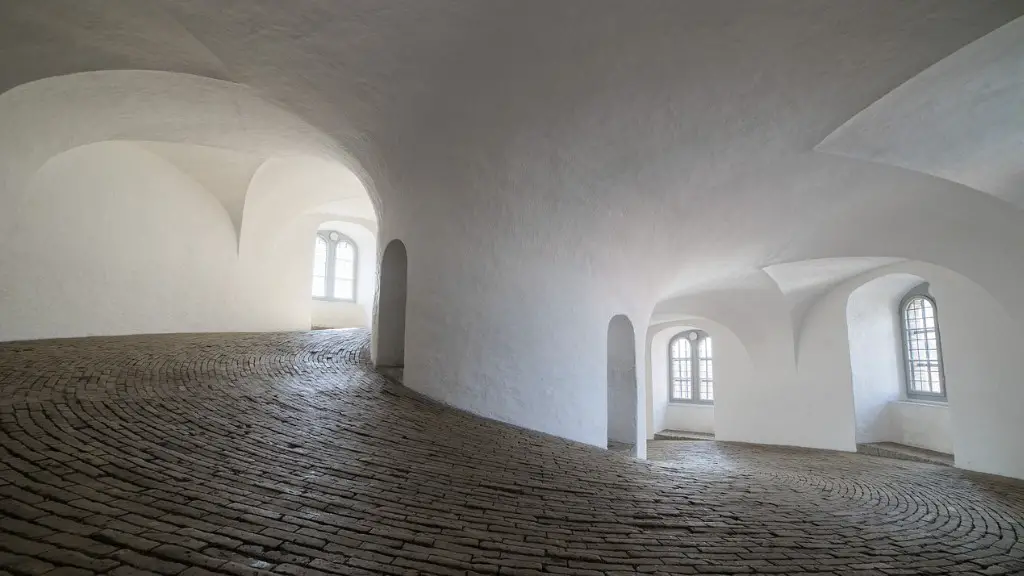Most people are curious about the architectural style of their homes. Was the house built in the Colonial style or is it a modern ranch house? If you’re wondering what style architecture is in your house, there are certain things you can do to determine it. To start, you’ll need to look at the different components of your home, such as its roof shape, windows, doors, and other external elements. This will help you to identify the basic style origin for your house.
The most widely known styles of architecture can give you clues as to what style your house is. Styles such as Colonial, Victorian, Modern, and Craftsman can provide a starting point. Once you can narrow down the style of your house, it will be easier to find specific features that define the look of your home. By looking for elements such as shutters on windows, dormers in the roof, or columns on the porch, you can determine whether your house is a Colonial, Victorian, Modern, or Craftsman style.
Commonly, architectural styles are based on the years in which they originated. For instance, the Colonial style was prevalent in the late 17th and 18th centuries. The Victorian style usually refers to American homes built between 1840 and 1900. The Craftsman style was popular from the early 1900s to the 1930s. And the Modern style is based on architectural trends of the 1930s and beyond. To determine the era your house was built in, you can research on a database or check with a local historian.
You may also be able to work out the architectural style of your house by looking at neighborhoods in your area. If your home is similar to many of the houses in the neighborhood, chances are it’s the same style. Furthermore, you can also take a look at floor plans for different homes that are generally the same era and compare them to the floor plan of your house. Often times, by comparing the floor plans you can tell what architectural style your house is.
Checking the details of your house is one of the most important steps in determining its architectural style. Window and door frames, trim, columns and other decorative features can provide clues as to what period or style your house is. It’s possible you may find elements of more than one style combined in your house, which can make the analysis process even more complicated. Working with a qualified architect or home inspector can be a major help, as they can easily identify the style of your home and suggest further actions you can take.
Interior Design Elements
When examining the interior of your house, it is helpful to consider the features and materials of the structure, such as type of carpets and other decorative elements. These can give you additional hints as to the style of your house. Another architectural feature to be aware of is the history of the house. If the house has been remodelled, the renovations can sometimes change the architecture style of the house.
When identifying the interior, special attention must be paid to the fireplace, chimney and mantel shelf. Often these are some of the most distinctive elements and could provide valuable insight into the style of architecture in your house. For example, if your house has a large stone fireplace with a thick, heavy mantel shelf, it could be an indication of an old colonial-style house. Similarly, if your house features a light weight mantel shelf and slender columns, it might be a hint that it was built in the Greek revival style.
Your house might not have the same style that it was originally built with. Many homes are remodelled over time, and may show signs of changes to architectural features. For instance, if your house has a Modern style exterior with a traditional Craftsman style interior, it could mean the house has gone through extensive renovations. In these cases it may require further analyzing to determine the actual style of the house.
Location & Landscape
The setting of your house is also important in helping you determine its architectural style. For example, a house located on a farm or in a rural area may have a different style than one located in a busy city. Different architectural styles are often used to express certain values or create certain atmospheres. Houses located in a forest or near the beach might have a more rustic style while elegant mansions located in the city would be a reminder of the upper class.
The landscape can also be an indicator of the style of architecture. If you look closely, you’ll often find subtle hints about the age of a house. Consider the vegetation around it, the height of landscaping materials, and the overall look of the vegetation can give you an clue whether a house is modern or traditional in style.
The orientation of a house with respect to the natural elements can often also help to define its style. Some homes may be diagonally facing the sun, which can indicate a more traditional style of architecture. On the other hand, a house may be placed perfectly parallel to the light, suggesting a modern design.
Home Photos
In addition to inspecting the house physically, you can also take comparing photographs of your home to other houses online. Comparison between similar homes in a certain period will provide an idea of what style architecture your house is. Reputable websites that feature real estate images can also be helpful in this process. Depending on the original purpose of the home, there may be differences in the style that can only be determined by taking photos and comparing them.
It is important to remember that there are some hybrid styles of architecture that do not fit neatly into any one category. These houses may contain elements of multiple styles, so it is important to take a careful look at all the possible house styles and apply it to yours.
Research & Resources
If you are still having trouble determining the style of architecture of your house, there are resources available to you. Local historians, building inspectors, and architects can play an important role in helping to answer your questions. They may be able to identify the rooftop style, windows, and other features that can help you determine the specific style of your house. Additionally, many local libraries can also provide valuable information on different residential architectural styles.
In order to make a definitive determination, it is important to gather as much information as possible. Pictures, sketches, documents and building plans can all help in the identification process. By using the above tips, you can typically accurately determine the style of architecture of your house.
Architectural Elements
Architectural elements such as stairs, shutters, and doorways can tell you a lot about the style of architecture in your house. These elements are usually specific to certain periods or may be combined in various ways in certain dwellings. A house built in the Italianate style might feature bay windows and decorative hoods over the windows, while an American Craftsman style house might feature porch columns and wide overhangs.
When examining the architectural elements, it’s important to consider the materials used. Different architectural styles tend to use different materials, such as brick, wood, or concrete. Examining the materials can give you clues as to the age and style of the house. For example, the Colonial style might be characterized by brick, while a Modern style house may have a lot of glass and steel.
In addition to the materials, features like the windows, doors, and trim can also help to determine the style of the house. Once you identify these features, you can start to compare them to the features in other houses as a point of comparison. Many times, you can tell whether your house is a Colonial, Modern, Victorian, or Craftsman style even before you step inside.
Analyzing Details
Taking a closer look at the details of your house can help too. Features such as columns, masonry, and window frames can tell you a great deal about the style of the house, and can be easy to spot even from the outside. If you can find out what style architecture is used in your house, you can also find sources that provide more detailed information about its design elements.
Ornamentation can also be an indicator of the architectural style. Ornamental features such as cornices, arches, and patterns often distinguish one style from another. For example, a house built in the Gothic Revival style might feature pointed arches, while a house built in the Italianate style would have more decorative brackets and cornices. Therefore, examining these features can help you identify the style of the house.
Also, looking at the style of construction is another way of finding clues about what style architecture you have. Typical Victorian style has a most pronounced style of construction when compared to other styles. Similarly, Craftsman and Modern architecture styles have patterns of construction that are distinctive from one another.
Architects & Inspectors
In addition to examining the physical features of your house, it is also important to consult a professional. An architect or building inspector may be able to provide you with a better understanding of the type of house you have and suggest further actions to take. The knowledgeable may have access to resources such as floor plans, previous renovation records and parts of building history that may give a clearer picture of the architectural style of your house.
Moreover, the professional may also have lived in the area for a long time and have historical knowledge regarding the style of homes in the area and the time they were built. This can be a great resource when trying to figure out what style architecture your home has.
Conclusion
Understanding the architectural style of your house is an exciting and rewarding experience. By taking the time to study the details and examine the elements of your home, it can often be determined what style architecture is in your house. Inspecting the windows, doors, and trim, comparing the designs in the area, and consulting with professionals can all be helpful in this process. Once you know the style of architecture in your house, you can gain a greater appreciation for the unique features it has.





